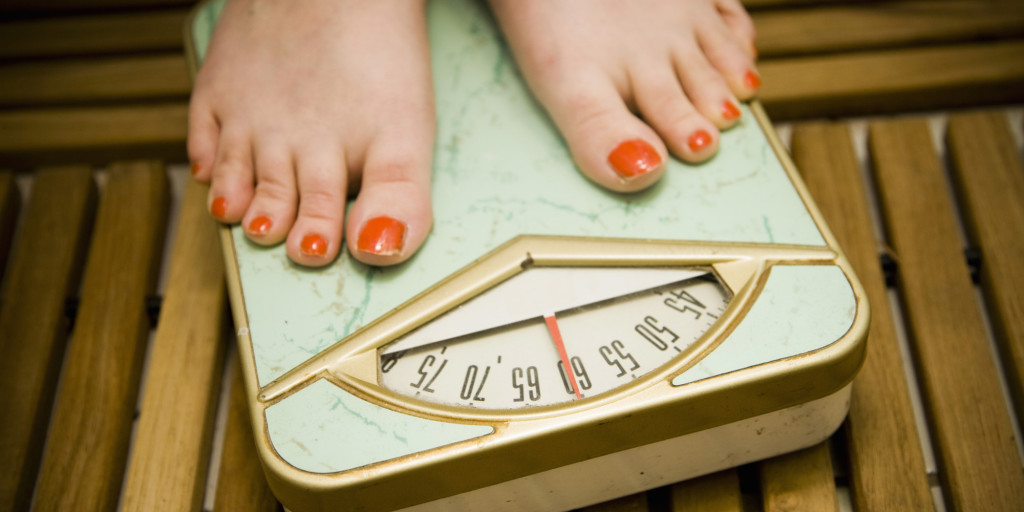It was my nineteenth birthday. I had just finished off a third slice of cake when my friend pointed out that I wouldn’t fit into my dress for my party at the rate I was going. At that moment, the first dangerous thought occurred—my food and exercise choices immensely affected the way I looked.
That day I took a long look in my bedroom mirror and decided I didn’t like my body. I decided to change it by altering my entire lifestyle: it was time to start “living healthier.”
It all started with a Bikram yoga class: 90 minutes of intense yoga in 105 degree heat. I accompanied my new fitness routine with healthier eating habits. I cut fast food, soda, baked goods, and candy out of my diet and made small lifestyle changes in order to live a more proactive life.
The weight came off quickly at first. Everyone told me how proud and impressed they were. They told me I was looking great and to “keep it up.” I started running on top of the Bikram yoga. I discovered the concept of calories and began cutting them out of my diet more and more each day.
As the weight loss decreased, my “healthy behaviors” increased. My goal was to lead a healthier lifestyle, but little did I know I had started a journey towards a dangerous eating disorder that would consume the next several years of my life.
After three months of intense exercise and restricting my caloric intake to 1000 calories a day, I had lost 30 pounds. The weight loss was extreme and noticeable; everybody wanted to know how I did it. I thought they were all proud of me, but it never crossed my mind that people were concerned.
Numbers began to control my life. I weighed myself twice a day and counted every calorie that entered my body. Eventually, I cut out almost all food groups and was eating below 1000 calories a day. Every item of food was carefully measured, weighed, and calculated into my daily intake, which I recorded religiously.
I began to notice how cold I always was and how thin my hair had gotten. I ignored these signs, however, and continued with what I thought was healthy.
I first recognized that I had a problem when I returned to college after summer vacation. I wouldn’t go out with my friends because I didn’t want to consume the calories in alcohol. I couldn’t even focus in class because I was constantly calculating and recalculating my daily intake.
I was tired, depressed, and anxious. The truth of my actions hit me when I had to force myself to the health center for chest pains. They told me I was suffering from an episode of Bradycardia, meaning my heart wasn’t beating fast enough.

Photo courtesy of huffingtonpost.com
The eating disorder spectrum is extremely wide and varied; it is not simply either anorexia or bulimia. There is orthorexia, binge eating disorder, atypical anorexia, and EDNOS. Atypical anorexia is a term coined for those who suffer all of the same behaviors as an anorexic without getting below a body mass index of 17.5. I fell into this category with a BMI of 18.
Receiving a diagnosis from a psychiatrist was the first step in what became the longest and hardest part of my eating disorder journey: recovery. Through my story I want to make it clear that full recovery from an eating disorder is possible. It took me two years to recover, and I still battle dangerous thoughts daily, but I am healthy and I know that this is possible for everyone.
My eating disorder began in the most innocent of ways—all I wanted was to be a healthier person. I had a culturally ingrained desire to be thin because I foolishly thought that being skinny was synonymous with being healthy. This is an erroneous way of thinking.
The media and our culture try to tell us that thinness is the ultimate goal and the way to achieve true happiness. This is a myth perpetuated by companies that make billions of dollars by taking advantage of our insecurities.
Being healthy can mean trying to eat all the super foods and green smoothies you can, but also recognizing that sometimes a bottle of wine and a pint of ice cream is exactly what you need when you’re feeling down. Being truly healthy means moving your body in a way that makes you feel happy and alive, not in ways that push you to the point of physical exhaustion for no reason other than weight loss.
Being healthy means loving your body exactly the way it is, and not trying to manipulate it into something it isn’t supposed to be. Health comes in every size and all bodies are beautiful. The secret to happiness can be found within yourself, not on some arbitrary number on a scale.
Learn more about eating disorders:

